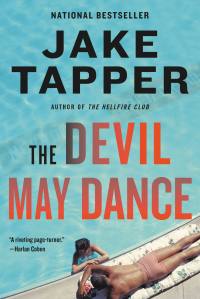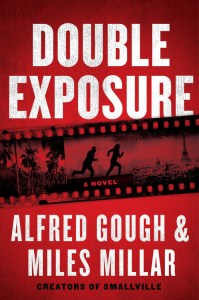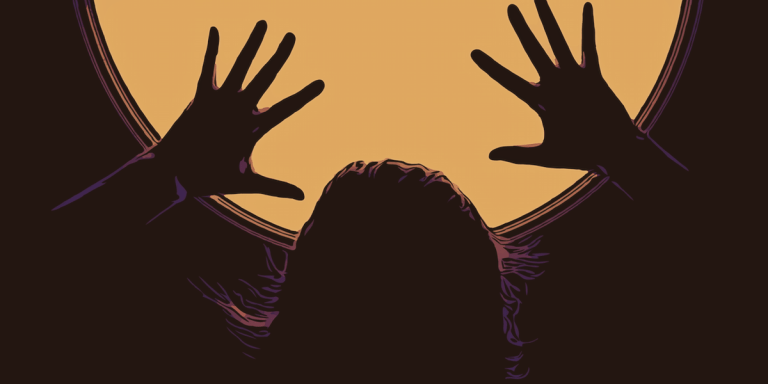Crime Fiction for Cinema Lovers
 When we think of the phrase “absolute power corrupts absolutely,” we typically associate it with dictators, government, and politics—but it’s just as common to see actors, directors, singers, and dancers wield that power. Fame reaches people. It’s persuasive, and that reach is powerful. It’s common knowledge that people become jealous of others’ fame, and when people get jealous, people get desperate. Desperate people do crazy things. Therein lies the relationship between crime and cinema. True, the story isn’t always so direct, but if you clicked on this article, you’re likely well aware of the close relationship between crime and cinema… still, here are a few crossovers that might have escaped your notice.
When we think of the phrase “absolute power corrupts absolutely,” we typically associate it with dictators, government, and politics—but it’s just as common to see actors, directors, singers, and dancers wield that power. Fame reaches people. It’s persuasive, and that reach is powerful. It’s common knowledge that people become jealous of others’ fame, and when people get jealous, people get desperate. Desperate people do crazy things. Therein lies the relationship between crime and cinema. True, the story isn’t always so direct, but if you clicked on this article, you’re likely well aware of the close relationship between crime and cinema… still, here are a few crossovers that might have escaped your notice.
On January 15, 1947, the torture-ravished body of a beautiful young woman is found in a Los Angeles vacant lot. The victim makes headlines as the Black Dahlia—and so begins the greatest manhunt in California history. Caught up in the investigation are Bucky Bleichert and Lee Blanchard: Warrants Squad cops, friends, and rivals in love with the same woman. But both are obsessed with the Dahlia—driven by dark needs to know everything about her past, to capture her killer, to possess the woman even in death. Their quest will take them on a hellish journey through the underbelly of postwar Hollywood, to the core of the dead girl’s twisted life, past the extremes of their own psyches—into a region of total madness.
Speaking of Sinatra, this thrilling sequel novel, The Devil May Dance, displays him as the close friend of JFK and mob affiliate that history has confirmed him to be. In fact, when protagonists Charlie and Margaret Marder, the rising stars of private investigation 1960s DC take on a job that leads them away from political corruption and into the Hollywood glamor of music and film, well… Sinatra’s at the eye of that storm, too. For those fascinated with Old Hollywood and its crimes, this historical fiction thriller is a win.
Related: Dark Crime Fiction Novels Set in the Glitz and Glamor of Hollywood
When out-of-work actress Adele catches a break to replace the star of a new horror film, she jumps at the chance to film on location in her homeland of Ireland. She arrives to a skeleton crew and an underwhelming script, but when the plot point start coming to life, metafiction becomes more nonfictional. This novel is a great overlap between screenplay and novel, and fans of both are likely to enjoy the ride.
Drawing from the cursed horror films of the 1980s, The Remaking follows an urban legend that gets resurrected and reenacted every twenty years. The original tale is that mother and daughter Ella Louise and Jessica are shunned from their town for alleged witchcraft, and after the bizarre death of one of their apothecary’s customers, the townspeople burn the mother and daughter at the stake in the middle of the night. Ella Louise’s grave is never found, but Jessica’s is the most famous in the South, fenced in by white crosses. When one of the children who heard the campfire tale grows up to make a film of the story, the story starts to reinvent itself.
Marissa Dahl, an up-and-coming film editor with a flair for faux pas, travels to a small island off the coast of Delaware to work with the legendary—and legendarily demanding—director Tony Rees on a feature film with a familiar logline.
Some girl dies.
It's not much to go on, but the specifics don't concern Marissa. Whatever the script is, her job is the same. She'll spend her days in the editing room, doing what she does best: turning pictures into stories.
But she soon discovers that on this set, nothing is as it's supposed to be—or as it seems. There are rumors of accidents and indiscretions, of burgeoning scandals and perilous schemes. Half the crew has been fired. The other half wants to quit. Even the actors have figured out something is wrong. And no one seems to know what happened to the editor she was hired to replace.
Then she meets the intrepid and incorrigible teenage girls who are determined to solve the real-life murder that is the movie's central subject, and before long, Marissa is drawn into the investigation herself.
The only problem is, the killer may still be on the loose. And he might not be finished.
From its ingenious cinematic innovations and memorable, oft-quoted script to its iconic cast, including Marlon Brando, Al Pacino, Robert Duvall, James Caan, The Godfather is considered by many to be the greatest movie ever made. And yet, the history of its making is so colorful, so chaotic, that one cannot help but marvel at the seemingly insurmountable odds it overcame to become a true cinematic masterpiece, and a film that continues to captivate its audience decades after its release.
David Toland, a decorated Korean War veteran, has done all he can to leave a life of combat behind. Now Director of Preservation for the Library of Congress’s National Film Archive, Toland has made it his mission to preserve what he loves most: the Golden Age of American cinema, moving pictures full of romance, adventure and American Dream. That is, until CIA Agent Lana Welles drops in unannounced with a film canister, smuggled over the Berlin Wall at great cost, that may prove WWII never really ended—it just went underground.
David reluctantly agrees to serve his country one last time and help recover the film for Lana and the CIA. But it seems not everyone is as eager as they are to dig up the past. David and Lana’s discovery awakens shadowy forces who will do anything to keep their findings a secret. In search of the truth, David and Lana find themselves intertwined in a global conspiracy.
By clicking 'Sign Up,' I acknowledge that I have read and agree to Hachette Book Group’s Privacy Policy and Terms of Use
What to Read Next
Mary Kay McBrayer is the author of America’s First Female Serial Killer: Jane Toppan and the Making of a Monster. You can find her short works at Oxford American, Narratively, Mental Floss, and FANGORIA, among other publications. She co-hosts Everything Trying to Kill You, the comedy podcast that analyzes your favorite horror movies from the perspectives of women of color. Follow Mary Kay McBrayer on Instagram and Twitter, or check out her author site here.









